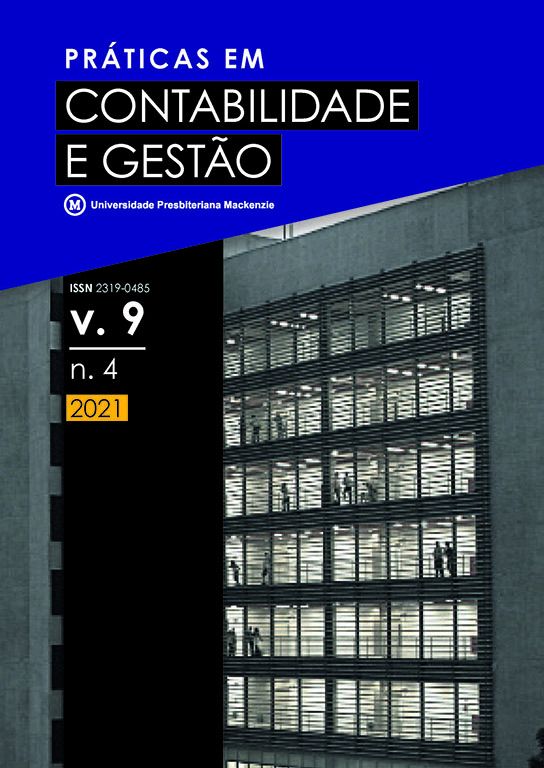Optimizing the business relationship with the customer of a small company in the service area: a proposal based on Systemic Intervention
Keywords:
Technological solution, Customer communication, Internal processesAbstract
This report aims to discuss the potential impact resulting from the adoption of a technological solution in a small business, related to accounting and financial services. Meetings with managers help to identify the company’s difficulty in structuring and organizing itself to maintain fluid contact with clients. It was proposed to create a technological solution. The purpose of this solution is facilitating and improving the communication between customers and the company’s departments, creating a system aimed at optimizing this relationship. The report suggests the potential benefits identified for the company in question could be extended to other companies with similar characteristics and same economic sector. The discussion is based on the difficulties reported by the company and the authors’ experience with problem solving. As a result of the system adoption, the article will additionally discuss the benefits derived from (i) the creation of a depository base of service and project proposals in an internal system, thus creating historical data for analyzing the performance of the areas; and (ii) optimization of the quality-of-service processes, content transmission and contact between teams and customers.Downloads
References
Bedford, N. M., & Baladouni, V. (1962). A Communication Theory Approach to Accountancy. In The Accounting Review (Vol. 37, Issue 4, pp. 650-659).
Correa, C. R., Rezende, A. A. de, & Daniel, L. P. (2013). Os impactos da política de inovação tecnológica nas universidades federais – uma análise das instituiçôes mineiras. https://doi.org/http;//dx.doi.org/JO.J] J32/rea.20J2.64
Jensen, michael c., & Willian H. Meckling. (1976). THEORY OF THE FIRM: MANAGERIAL BEHAVIOR, AGENCY COSTS AND OWNERSHIP STRUCTURE. Journal of Financial Economics, 72(10), 1671-1696. https://doi.org/10.1177/0018726718812602
Kawai, R. M. (Universidade M. de S. P. (2017). Indicadores de Desempenho em um Pequena Empresa que Adota um Modelo de Gestão Baseado na Confiança. Revista Da Micro e Pequena Empresa, 123-138.
Leethbridge, E. (1997). Tendências da empresa familiar no mundo. Revista Do BNDES, 1(1), 185-199.
Malmi, T., & Brown, D. A. (2008). Management control systems as a package-Opportunities, challenges and research directions. Management Accounting Research, 19(4), 287-300.
https://doi.org/10.1016/j.mar.2008.09.003
Moreira, L. V. M., & Frezatti, F. (2017). O PAPEL DO SISTEMA DE CONTROLE GERENCIAL NA TRANSIÇÃO ENTRE ESTÁGIOS DO CICLO DE VIDA ORGANIZACIONAL EM UMA EMPRESA FAMILIAR. Journal of Chemical Information and Modeling, 110(9), 1689-1699. https://doi.org/10.4270/ruc.2019xxx
Moura, A. L. de, Santos, D. F. L., & Conceição, E. V. (2019). Proposed Model of Financial Management Applied To a Small Business. 36–68.
Moura, F. V. De, Daniel, A. F., Gomes, J. N., & Pereira, J. J. (2014). Conflitos de Agência , Legitimidade e o discurso sobre Governança Corporativa: o caso Petrobras. XI Congresso USP de Iniciação Científica Em Contabilidade. www.congressousp.fipecafi.org
Nelson, R. R., & Winter, S. G. (1982). An Evolution Theory of Economic Change. In The Elgar Companion to Post Keynesian Economics, Second Edition. – Belknap Press of Harvard University Press – Cambridge. https://doi.org/10.4337/9781849803182.00059
Pianca, O., & Ferreira, F. (2017). a Importância Do Planejamento Sucessório Em Empresas Familiares Do Município De Aracruz – Es. Administração de Empresas Em Revista, 1(11), 29-51. https://doi.org/10.21902/AdminRev.2316-7548.v1i11.2260
Vasconcelos, A. C. V. H., De Oliveira, M. F., & Fernandes, V. D. C. (2017). O processo de sucessão em diferentes combinações de gênero: um estudo comparativo de casos em empresas familiares de Monte Carmelo, MG. RACE - Revista de Administração, Contabilidade e Economia, 16(1), 203-226. https://doi.org/10.18593/race.v16i1.11992
Wang, Pp. (2004). Connecting the parts with the whole: toward an information ecology theory of digital innovation ecosystems. Review Literature And Arts Of The Americas, 55(1), 1-22. https://doi.org/10.25300/MISQ/2021/15864




